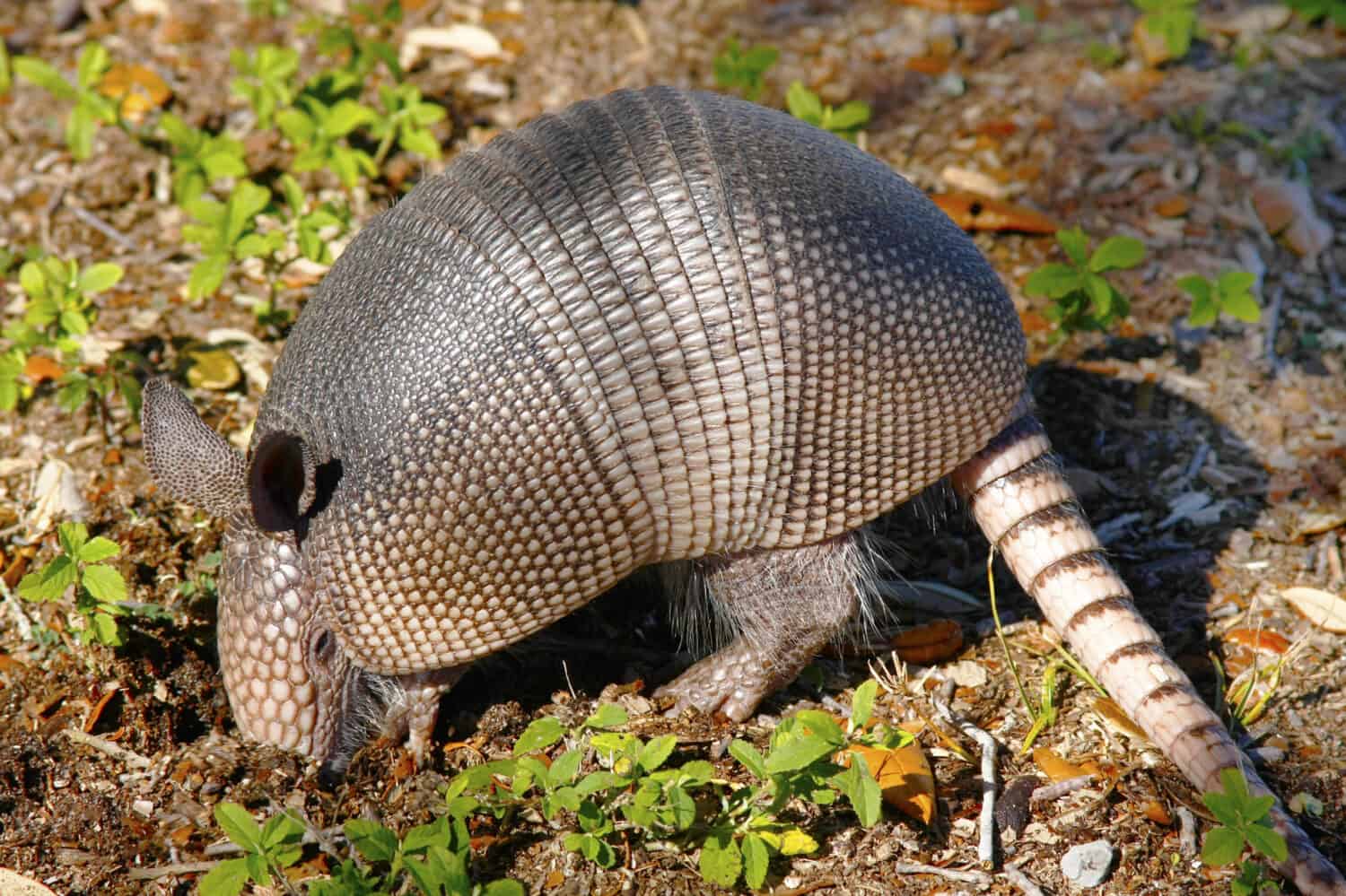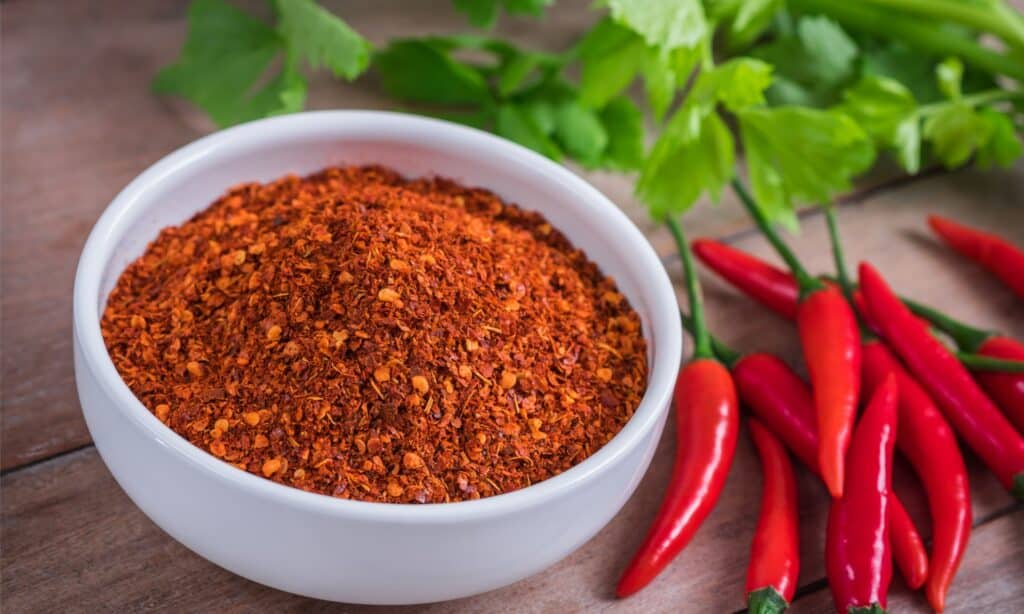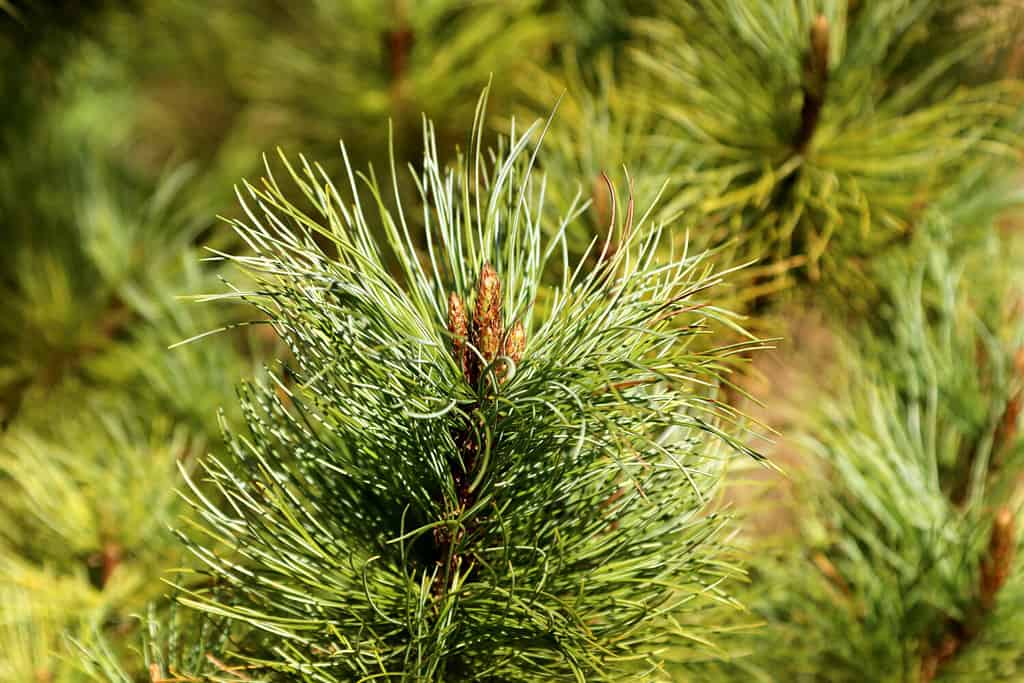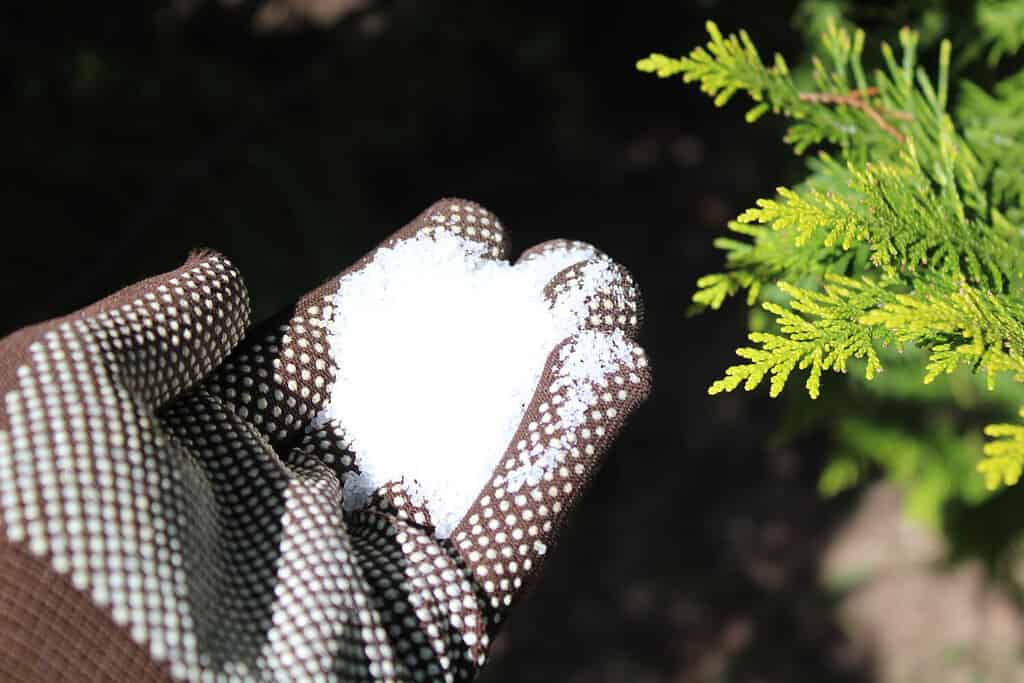Armadillos are unique animals that can react differently to certain scents. Homeowners and gardeners can harness these reactions to deter these nocturnal creatures from invading their yards and gardens. Understanding which smells and odors repel armadillos can be vital to managing and preventing unwelcome visits in a safe and humane way.
In this article, we’ll delve into the specific smells armadillos hate and explore how you can use them. But first, let’s learn a little bit about armadillos and why you won’t want them in your yard in the first place!

Armadillos (Dasypodidae)

The nine-banded armadillo is the only species of armadillo in the United States.
©guentermanaus/Shutterstock.com
Armadillos are intriguing mammals characterized by their unique armored shells of tough, protective scutes. The nine-banded armadillo, identified by the nine flexible segments on its armor, is the most recognized species in the U.S. These animals have tiny eyes and an elongated snout that they use to look for food. Their tough armor, which varies in color from light to dark brown, shields most of their body, including their head and tail. Thanks to their strong claws, armadillos are skilled at digging, a talent they use for food search and burrowing.
Indigenous to the Americas, armadillos are versatile in their habitat choices, ranging from grassy terrains to dense forests. But they prefer warm, humid regions, making places like the southern U.S. a perfect home. Their diet includes insects and small creatures like termites, beetles, ants, and worms. With a heightened sense of smell, they’re adept at sniffing underground prey, which they dig up using their claws. Although insects are their main source of food, armadillos also occasionally eat plants, other small animals, and even dead animals when available.
Why Don’t You Want Armadillos?

There are many reasons why you won’t want armadillos in your backyard.
©Steve Bower/Shutterstock.com
While they might be intriguing and relatively cute-looking creatures, armadillos can pose several challenges for homeowners when they habitually frequent their yards. There are a few reasons why you won’t want armadillos.
One primary concern associated with armadillos is the extensive damage they can inflict on landscapes and gardens. As natural diggers with a diet primarily consisting of insects and invertebrates, armadillos burrow into the ground for food. This unfortunate behavior can result in numerous unsightly holes and dug-up patches scattered across the yard, disrupting the aesthetics of your previously manicured lawn and/or garden. Yikes!
These excavations not only ruin the beauty of the landscape but can also jeopardize the health of your beloved plants, as the digging can disturb root systems, leading to plant stress or even death.
This burrowing behavior of armadillos can also pose structural threats. The extensive network of tunnels they create can undermine the foundations of buildings, patios, and driveways, potentially causing them to crack or sink.
Furthermore, armadillos have been identified as potential carriers of the bacterium Mycobacterium leprae, which causes leprosy. However, with that said, don’t worry too much! The risk of transmission to humans is low.
Now, if all of the above is not enough reason to be proactive at stopping armadillos from frequenting your yard, additionally, their burrows can become hazards. These holes pose tripping risks for you, your family, and your pets!
Given all of these issues, it’s understandable why many homeowners prefer to deter armadillos from their properties. While you can use methods such as live trapping and electric fencing, deterring armadillos by using smells that armadillos hate is a much more humane and natural method.
8 Smells That Armadillos Hate
So, without further ado, here are 8 smells that armadillos hate and how you can use them to your advantage to prevent those unsightly holes and burrows from appearing in your garden.
1. Vinegar

White vinegar can be used to create a repellent spray.
©focal point/Shutterstock.com
Vinegar is a common household item with a pungent odor that many animals, including armadillos, find unappealing. To leverage vinegar’s repelling properties against armadillos, homeowners can create a simple repellent spray. By diluting vinegar with water (typically, a 50:50 ratio works effectively), you can produce a potent enough solution to deter armadillos without causing damage to plants or grass when applied. But to protect your plants, it’s best to avoid spraying them directly.
Spray the solution around the yard’s perimeter, near the entrance of armadillo burrows, and in areas where they’ve been particularly active. Additionally, soaking rags in vinegar and placing them strategically around the garden or yard can amplify the deterrent effect, especially near their favorite digging spots.
However, it’s essential to note that vinegar may lower the soil’s pH level if used in large quantities, potentially affecting the health of some plants. For this reason, it’s best to avoid absolutely drenching the soil with the solution. You should also reapply the vinegar spray after rain, as the scent of vinegar can be washed away or diluted. While vinegar is a natural repellent, its effectiveness may vary, and for some, it might serve best as a complementary method used alongside other deterrent measures.
2. Cayenne Pepper

The spiciness of cayenne pepper can act as an irritant to pests and wildlife like armadillos.
©iStock.com/Amarita
Cayenne pepper, a spicy seasoning derived from dried and ground chili peppers, is known for its strong, pungent aroma and intense heat. While it’s a favorite ingredient in various cuisines, many animals, including armadillos, hate its scent and fiery taste. The compounds responsible for cayenne pepper’s spiciness, mainly capsaicin, act as irritants to many pests and wildlife, making it an effective, environmentally-friendly deterrent.
To use cayenne pepper as an armadillo repellent, homeowners can use a few different methods.
A simple yet effective approach is to simply sprinkle cayenne pepper powder around the yard’s perimeter, especially near armadillo burrows or their frequent digging sites. When armadillos come into contact with the pepper, the pungent aroma and the irritating properties of the capsaicin can deter them from returning to the treated areas. While the cayenne pepper may not irritate you, armadillos have a much better and more sensitive sense of smell!
For a more prolonged repellent effect, you can alternatively make a spray. To do this, mix cayenne pepper with water and a small amount of dish soap. After thoroughly mixing it together, spray the solution in the affected areas.
However, a few words of caution: make sure to wear gloves and goggles when handling cayenne pepper, as it can irritate the skin and eyes. Additionally, homeowners should be cautious when applying the pepper or spray solution near edible plants to ensure they don’t inadvertently spice up their produce. As with most natural repellents, the effectiveness of cayenne pepper can vary. Also, don’t forget to reapply it as necessary, especially after rain.
3. Essential Oils

Armadillos hate the smell of certain essential oils, such as lavender.
©iStock.com/Olivka888
Essential oils possess strong fragrances that have been utilized for various purposes over the years, from aromatherapy to natural pest control. Animals like the armadillo are sensitive to these potent scents, thanks to their sensitive noses, so specific essential oils can also serve as deterrents. In particular, essential oils like eucalyptus, peppermint, lemon, and lavender are known for their repelling properties against various pests and wildlife, including armadillos.
To use essential oils to deter armadillos, create a repellent spray by adding a few drops of the chosen essential oil (or a combination of oils for increased potency) to a water-filled spray bottle. Mix around 10 to 15 drops of the oil for every 1 cup of water. To help emulsify the oil and improve its adhesion to surfaces when sprayed, add a small amount of dish soap. Once you thoroughly mix all the ingredients of the spray, spray the solution around the yard’s perimeter, focusing mainly on areas where armadillo activity has been spotted.
When using essential oils as a repellent, keep in mind that while they are natural, they are also incredibly potent. So, avoid direct application on plants, especially edible ones, to prevent any potential damage or flavor alteration. Further, to be on the safe side, test spray a small area of your yard first to ensure the oil doesn’t cause unintended side effects to your yard or garden plants.
4. Pine

Scatter pine needles around your yard to deter armadillos.
©Anna50/Shutterstock.com
Although they may smell nice to us, surprisingly, pine needles can also be a deterrent. By collecting and scattering a layer of pine needles around the garden or yard, especially in regions where armadillo activity is frequent, you can deter armadillos. Pine acts like a smell mask, masking the smell of insects and other prey. The overwhelming smell, therefore, creates an undesirable environment for armadillos, pushing them to look elsewhere for food.
An alternative approach involves using pine-based products, such as pine oil or pine-scented cleaners. To make a repellent spray, dilute pine oil in water (ensuring it’s well-mixed, as oil and water naturally separate), and spray the solution around the yard’s perimeter, focusing on potential entry points.
As with any other natural repellent strategy, reapplying regularly and after wet weather is crucial to maintain the deterrent’s effectiveness. And, as always, testing the solution on a small patch before widespread application is wise to ensure no adverse effect on plants or the landscape.
5. Castor Oil

Another smell that armadillos hate is castor oil.
©Alexander Ruiz Acevedo/Shutterstock.com
Castor oil possesses a distinctive and pungent odor. This smell is not only unique but is also super unappealing to armadillos and other burrowing animals!
To use castor oil as an armadillo repellent, you can create a diluted solution. Simply mix castor oil with water, typically in a ratio of one part castor oil to five parts water. Add a few drops of dish soap as well. Once combined, pour or spray this mixture over affected areas, such as near burrows or recent digging spots. The pungent odor of castor oil permeates the soil, making it less appealing for armadillos to dig and forage in those areas.
Castor oil’s pungent odor might be off-putting to some homeowners, so it might be best to use it in areas where its smell will be dispersed in the open and fresh air. Additionally, reapplication will be necessary.
6. Peppermint

There are many ways you can use peppermint to deter armadillos.
©rawf8/Shutterstock.com
Another smell that armadillos hate is peppermint. Of course, to us, peppermint smells amazing, with its sharp flavor and fragrance. But this exact quality is what deters certain pests, including armadillos. The cool thing about peppermint as a deterrent is that there are many ways to use it.
First, as mentioned previously, one method is to use peppermint essential oil. By mixing a few drops with water in a spray bottle, you can then spray garden perimeters, burrow openings, or other areas you may want to protect. Remember to reapply, especially after rain!
Another method to repel armadillos is planting peppermint plants around the desired protective areas. This introduces the scent directly into the environment. Plus, at the same time, you can have fresh peppermint at your disposal!
Alternatively, you can soak some cotton balls or rags with peppermint oil and place them strategically around your yard.
7. Epsom Salts

The strong smell of Epsom salts masks the smell of food.
©Martina Unbehauen/Shutterstock.com
Epsom salts have been traditionally used for therapeutic uses in baths and various other uses. Interestingly, armadillos and other pests do not like the smell of Epsom salts, thanks to their strong scent that masks the smell of food!
The application process is pretty straightforward. You can simply create an odor barrier by sprinkling the salts around areas frequented by armadillos, such as garden beds or the outside of their burrows.
However, given that Epsom salts may dissolve quickly, it’s always a good idea to reapply them regularly, especially after rainfall. Furthermore, a word of caution: while this method can be beneficial, and some plants might benefit from the magnesium in the salts, excessive amounts can alter the soil’s composition.
8. Garlic

You can use either fresh garlic or garlic powder to repel armadillos.
©innakreativ/Shutterstock.com
Garlic has long been known to repel various pests, from insects to larger animals, primarily due to its strong odor that masks the smell of food. To harness the repellent power of garlic against armadillos, make an easy, sprayable solution. Crush several garlic cloves and mix them with water, letting the mixture sit overnight. Then, spray the liquid around areas where armadillos frequent.
Alternatively, you can directly sprinkle garlic powder around your yard.
As with many natural repellents, reapply often, especially after rain. For best results, combine this method with other methods mentioned above.
Summary of Smells That Armadillos Absolutely Hate
| Number | Smell | How to Use |
|---|---|---|
| 1 | Vinegar | Scatter pine needles around the yard or use a pine spray |
| 2 | Cayenne Pepper | Sprinkle cayenne pepper in affected areas; create a cayenne pepper spray by diluting it with water and dish soap |
| 3 | Essential Oils | Create a spray by diluting 10 to 15 drops of oil with 1 cup of water and some dish soap and spray around the yard’s perimeter |
| 4 | Pine | Scatter pine needles around or use a pine spray in your yard |
| 5 | Castor Oil | Dilute castor oil with water and soap and spray or pour it directly on the soil |
| 6 | Peppermint | Dilute peppermint oil with water and spray affected areas; plant peppermint; soak cotton balls or rags with peppermint oil |
| 7 | Epsom Salts | Sprinkle Epsom salts around the affected areas |
| 8 | Garlic | Crush garlic cloves and mix with water then spray; sprinkle garlic powder around the yard |
The photo featured at the top of this post is © Steve Bower/Shutterstock.com
Thank you for reading! Have some feedback for us? Contact the AZ Animals editorial team.






